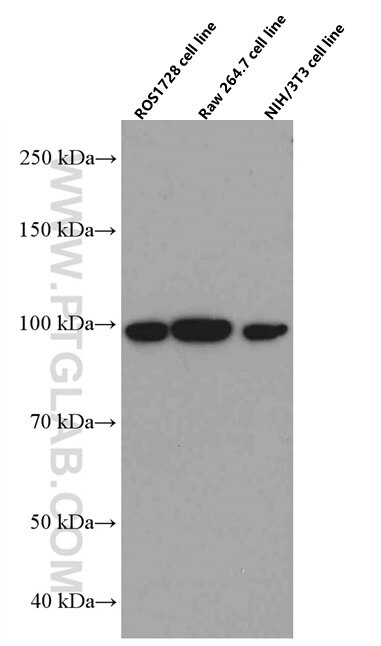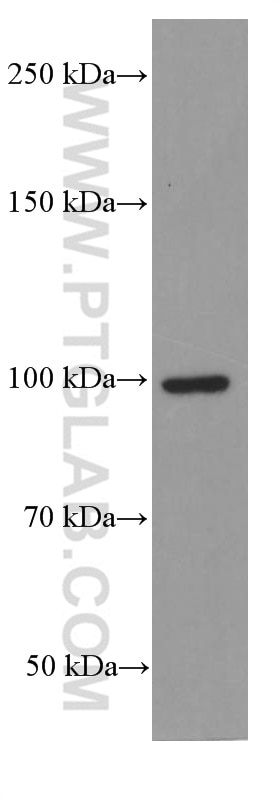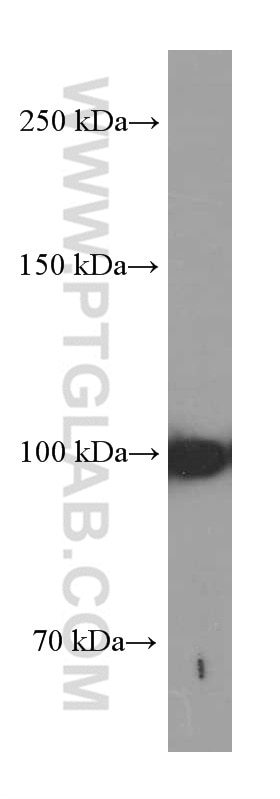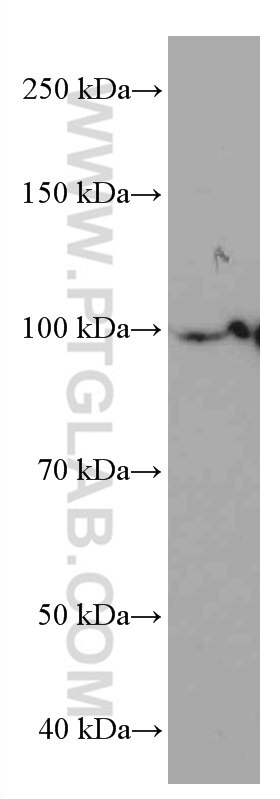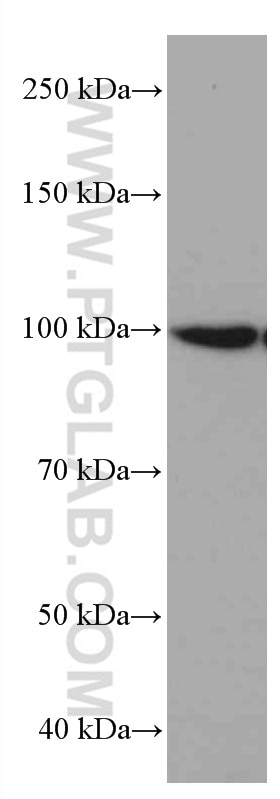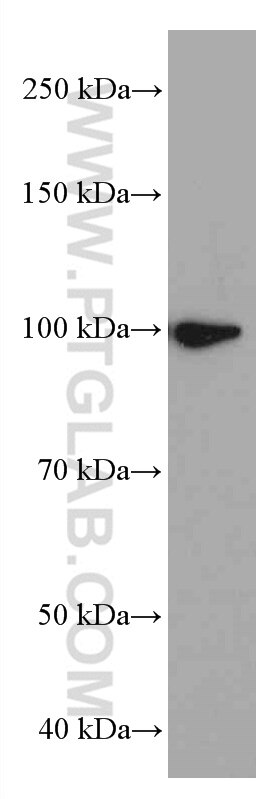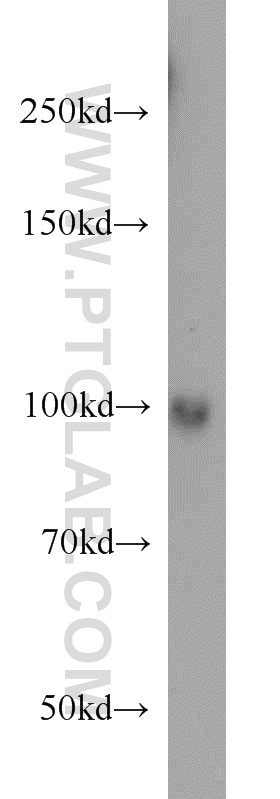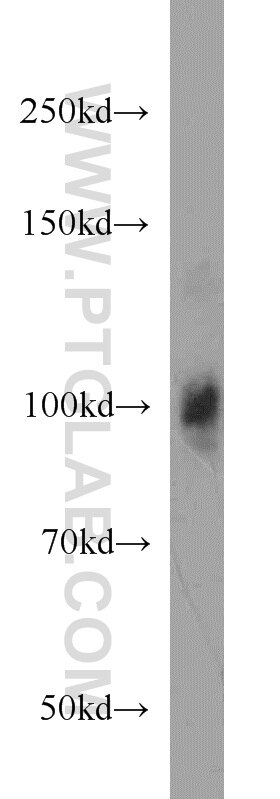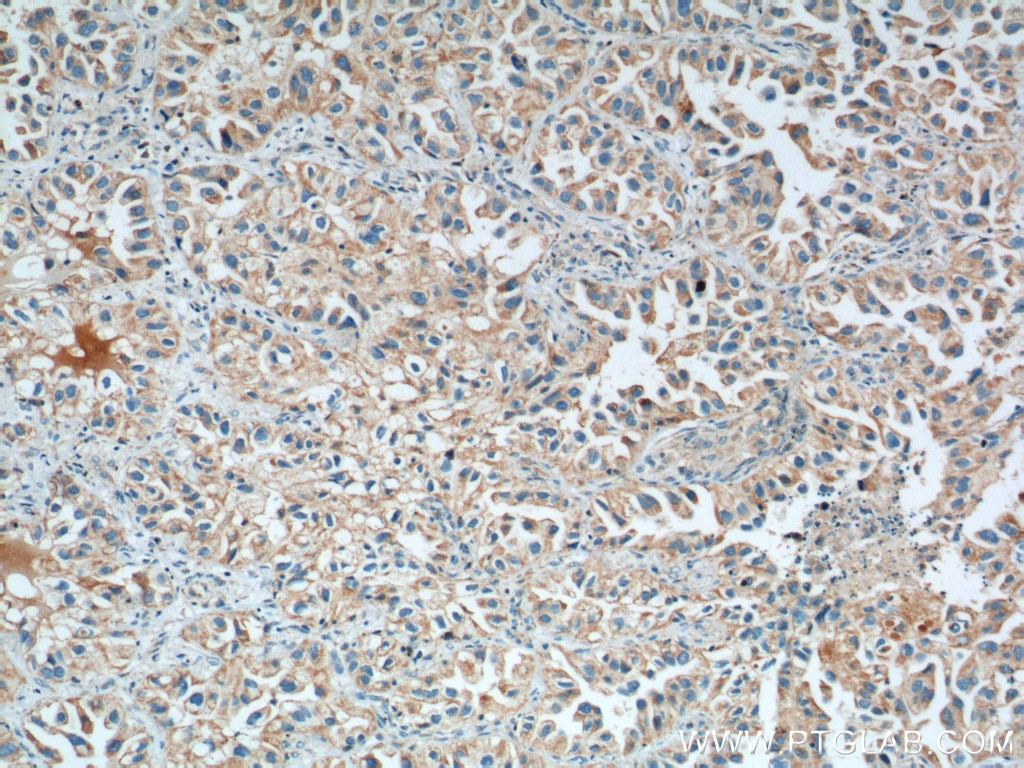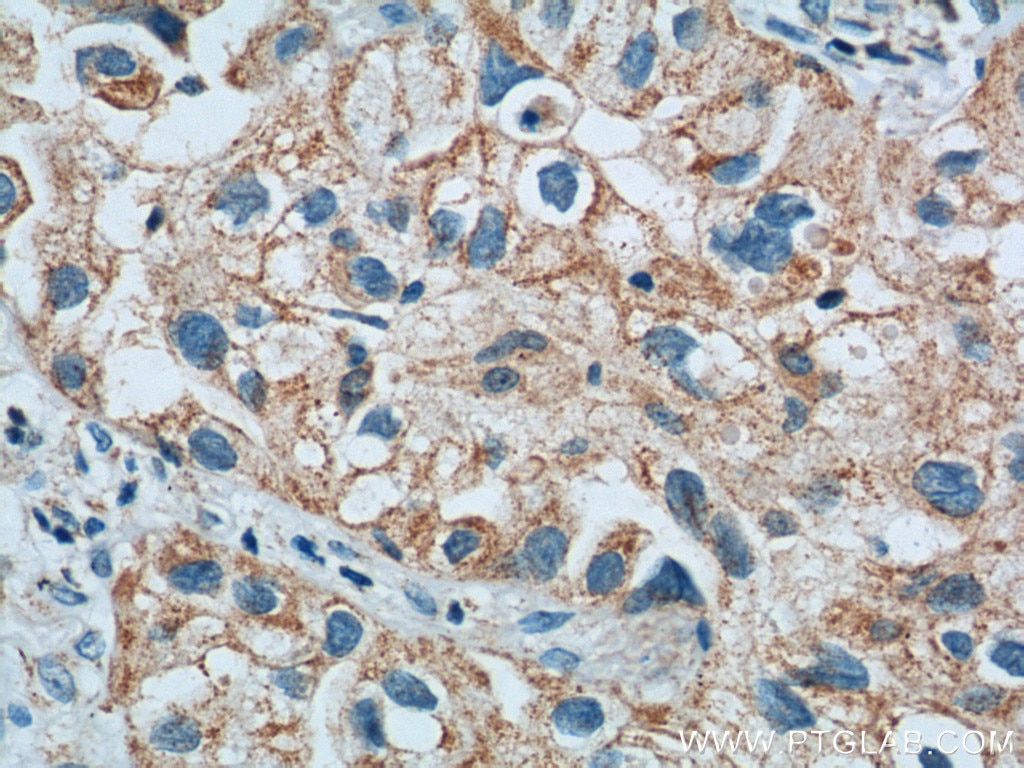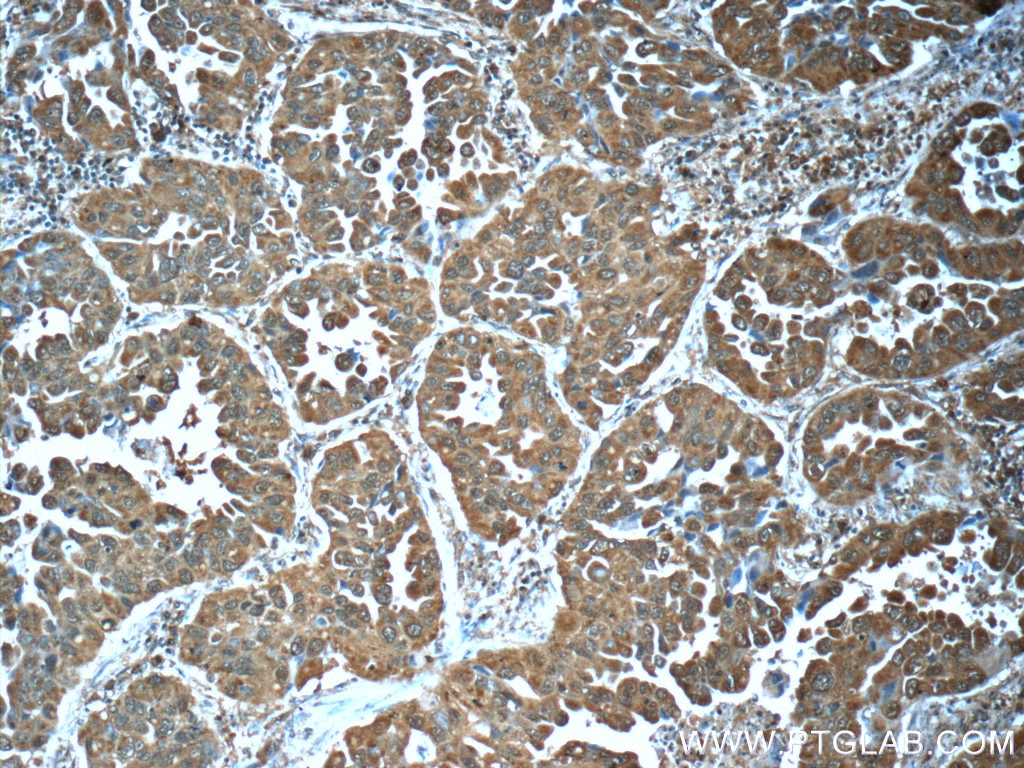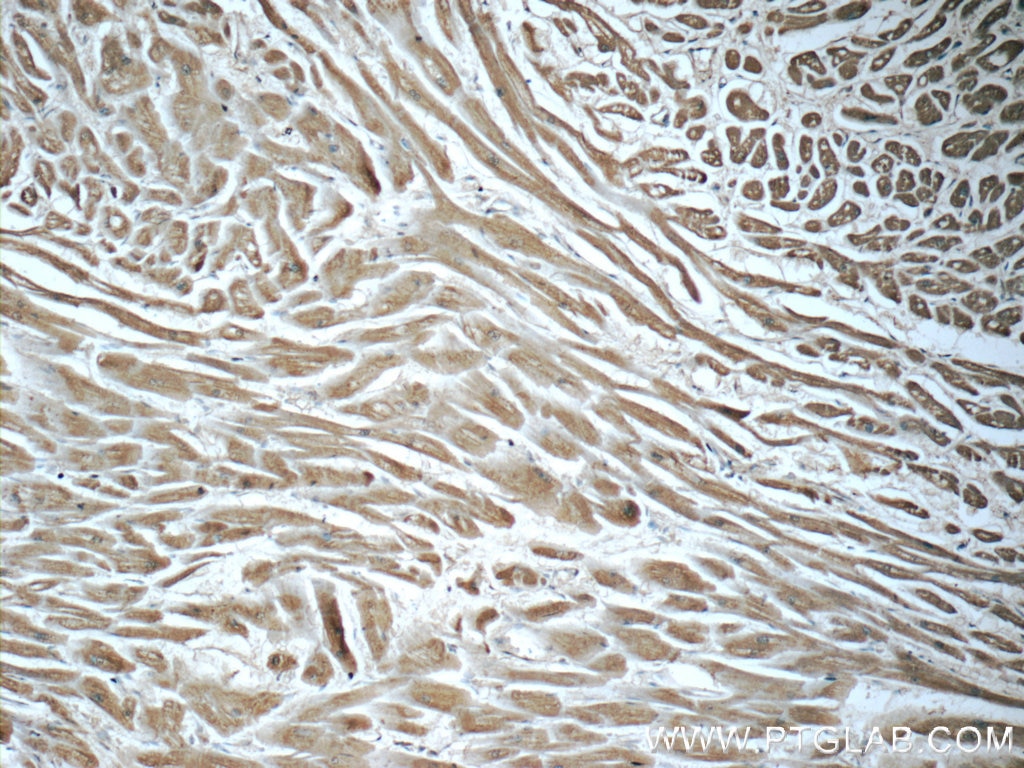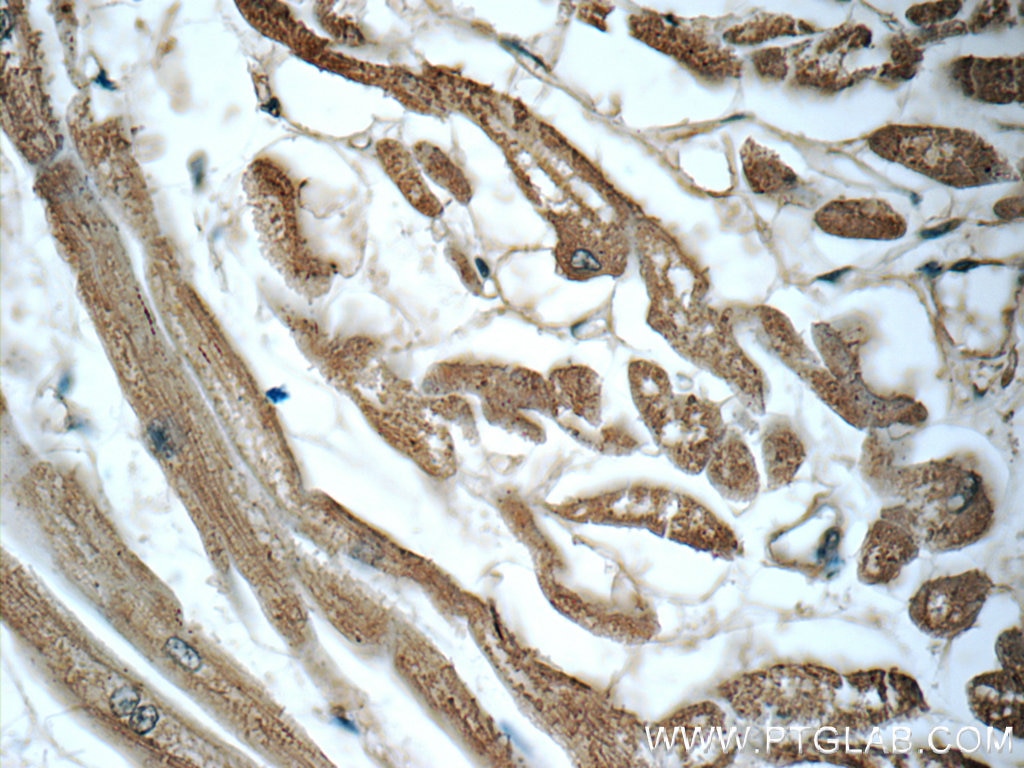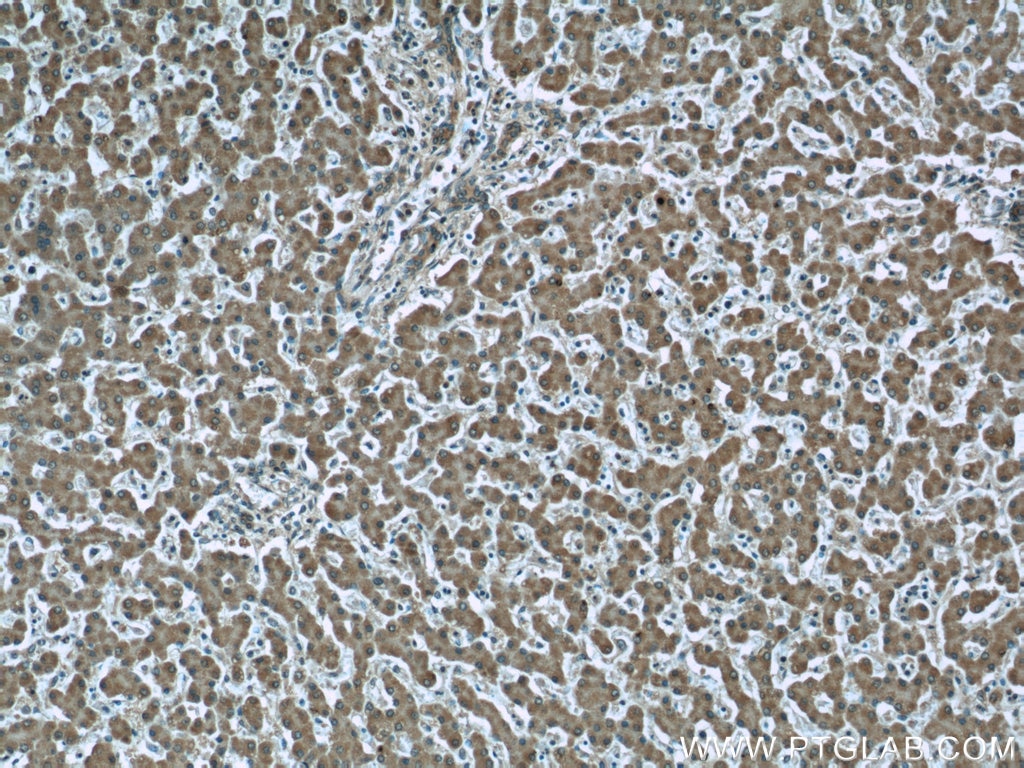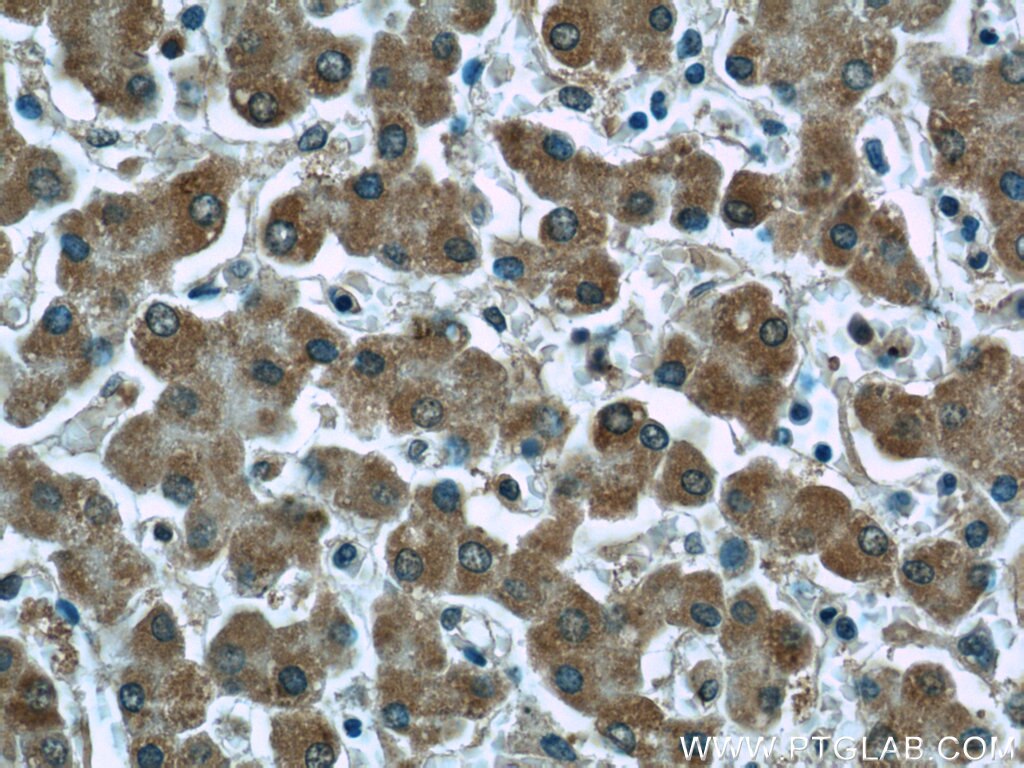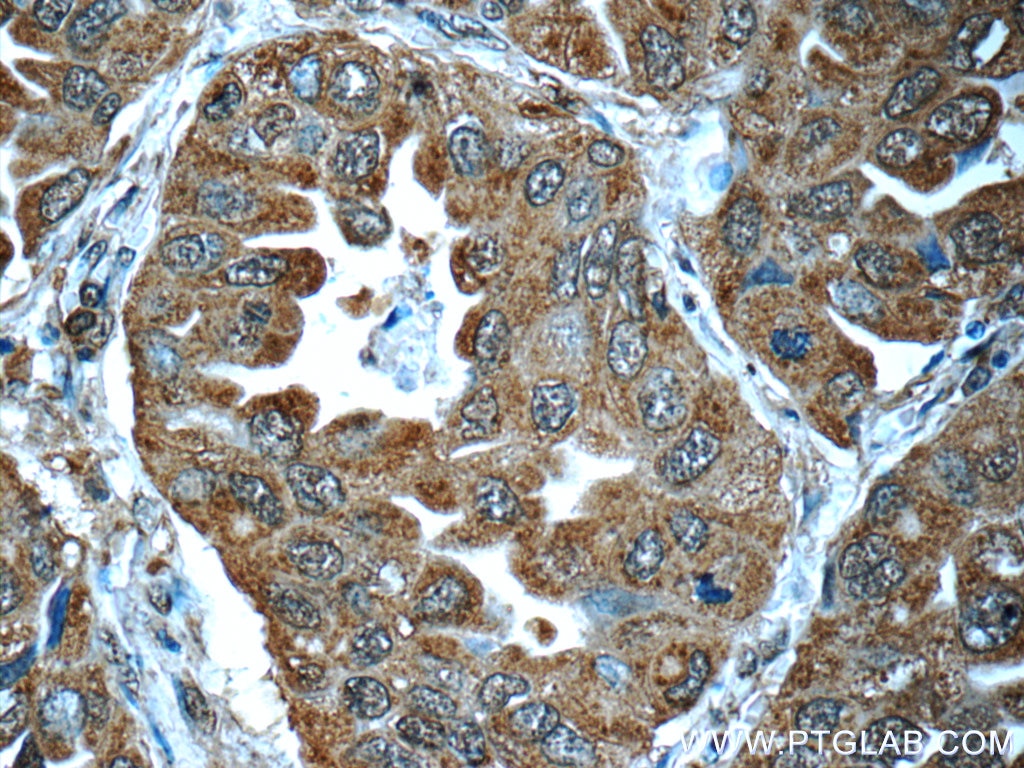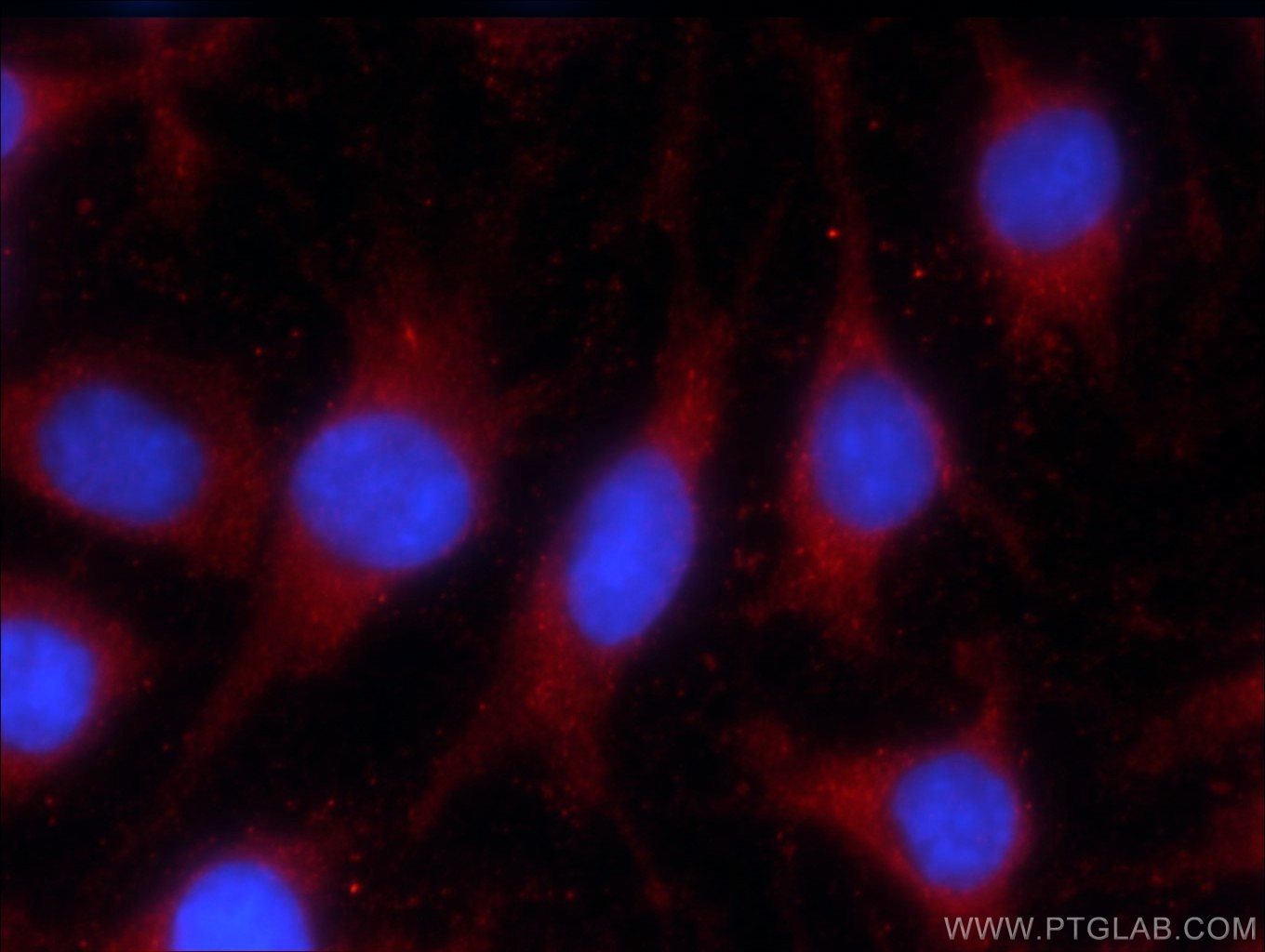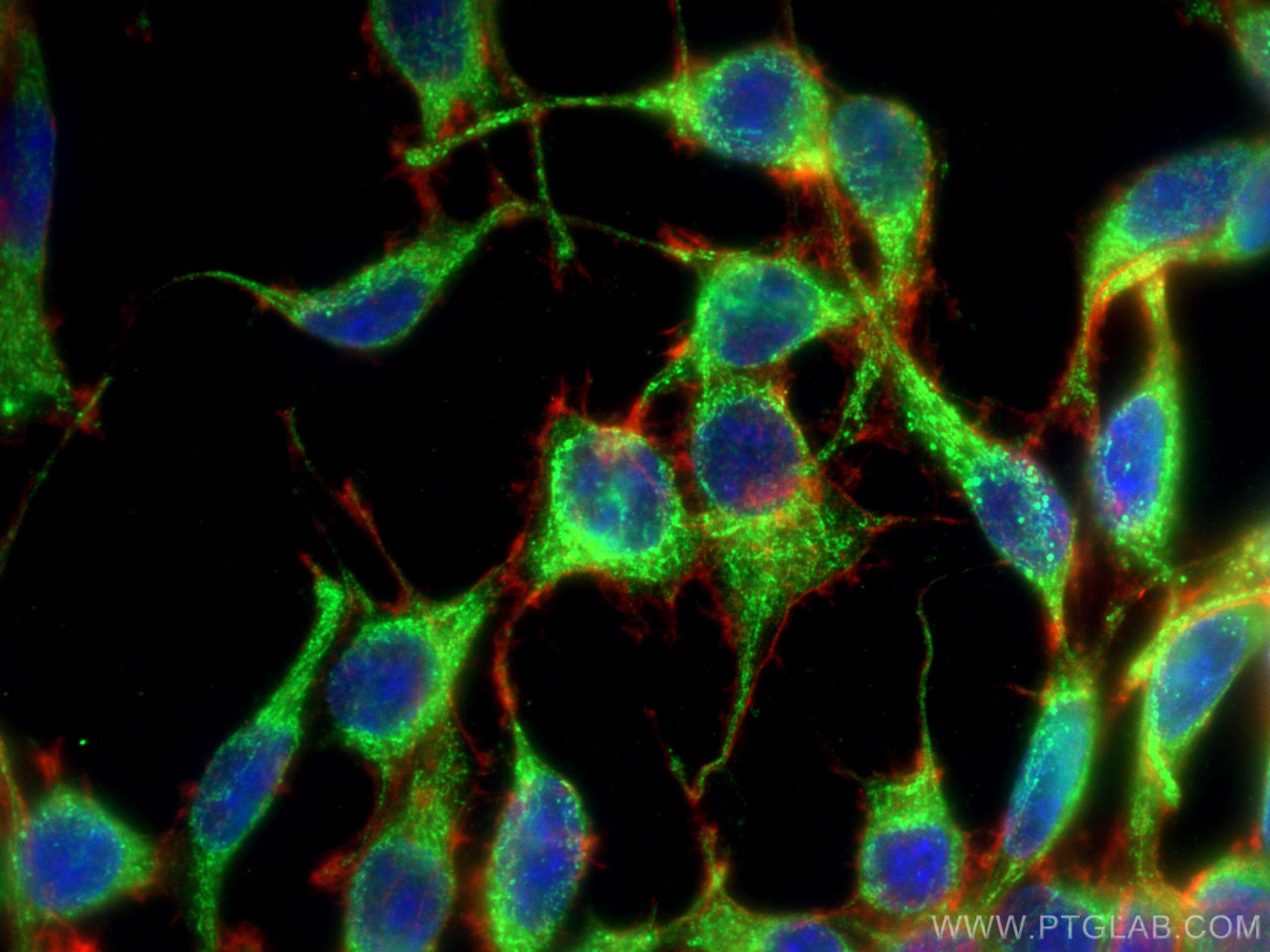- Phare
- Validé par KD/KO
Anticorps Monoclonal anti-LONP1
LONP1 Monoclonal Antibody for WB, IHC, IF/ICC, ELISA
Hôte / Isotype
Mouse / IgG1
Réactivité testée
Humain, rat, souris
Applications
WB, IHC, IF/ICC, CoIP, ELISA
Conjugaison
Non conjugué
CloneNo.
1C6C12
N° de cat : 66043-1-Ig
Synonymes
Galerie de données de validation
Applications testées
| Résultats positifs en WB | cellules ROS1728, cellules HEK-293, cellules HSC-T6, cellules Jurkat, cellules L02, cellules NIH/3T3, cellules RAW 264.7, tissu cardiaque humain, tissu hépatique humain |
| Résultats positifs en IHC | tissu de cancer du poumon humain, tissu cardiaque humain, tissu hépatique humain il est suggéré de démasquer l'antigène avec un tampon de TE buffer pH 9.0; (*) À défaut, 'le démasquage de l'antigène peut être 'effectué avec un tampon citrate pH 6,0. |
| Résultats positifs en IF/ICC | cellules C6, |
Dilution recommandée
| Application | Dilution |
|---|---|
| Western Blot (WB) | WB : 1:1000-1:5000 |
| Immunohistochimie (IHC) | IHC : 1:400-1:1600 |
| Immunofluorescence (IF)/ICC | IF/ICC : 1:50-1:500 |
| It is recommended that this reagent should be titrated in each testing system to obtain optimal results. | |
| Sample-dependent, check data in validation data gallery | |
Applications publiées
| KD/KO | See 1 publications below |
| WB | See 10 publications below |
| IHC | See 3 publications below |
| IF | See 2 publications below |
| CoIP | See 1 publications below |
Informations sur le produit
66043-1-Ig cible LONP1 dans les applications de WB, IHC, IF/ICC, CoIP, ELISA et montre une réactivité avec des échantillons Humain, rat, souris
| Réactivité | Humain, rat, souris |
| Réactivité citée | rat, Humain, souris |
| Hôte / Isotype | Mouse / IgG1 |
| Clonalité | Monoclonal |
| Type | Anticorps |
| Immunogène | LONP1 Protéine recombinante Ag7306 |
| Nom complet | lon peptidase 1, mitochondrial |
| Masse moléculaire calculée | 106 kDa |
| Poids moléculaire observé | 100 kDa |
| Numéro d’acquisition GenBank | BC000235 |
| Symbole du gène | LONP1 |
| Identification du gène (NCBI) | 9361 |
| Conjugaison | Non conjugué |
| Forme | Liquide |
| Méthode de purification | Purification par protéine G |
| Tampon de stockage | PBS with 0.02% sodium azide and 50% glycerol |
| Conditions de stockage | Stocker à -20°C. Stable pendant un an après l'expédition. L'aliquotage n'est pas nécessaire pour le stockage à -20oC Les 20ul contiennent 0,1% de BSA. |
Informations générales
LONP1(Lon protease homolog, mitochondrial) is also named as LONP, LONHS, HLON, LON, PRSS15, PIM1, MGC1498 and belongs to the peptidase S16 family. It seems to play a major role in the elimination of oxidatively modified proteins in the mitochondrial matrix(PMID:18021745). LONP1, also a nuclearly encoded and mitochondrially located stress-responsive protease, is involved in heme-mediated ALAS-1 turnover(PMID:21659532). It recognizes specific surface determinants or folds, initiates proteolysis at solvent-accessible sites, and generates unfolded polypeptides that are then processively degraded(PMID:15870080).
Protocole
| Product Specific Protocols | |
|---|---|
| WB protocol for LONP1 antibody 66043-1-Ig | Download protocol |
| IHC protocol for LONP1 antibody 66043-1-Ig | Download protocol |
| IF protocol for LONP1 antibody 66043-1-Ig | Download protocol |
| Standard Protocols | |
|---|---|
| Click here to view our Standard Protocols |
Publications
| Species | Application | Title |
|---|---|---|
Acta Pharm Sin B Miriplatin-loaded liposome, as a novel mitophagy inducer, suppresses pancreatic cancer proliferation through blocking POLG and TFAM-mediated mtDNA replication | ||
Dev Cell HMOX1-LDHB interaction promotes ferroptosis by inducing mitochondrial dysfunction in foamy macrophages during advanced atherosclerosis | ||
Mol Med ATF5 regulates tubulointerstitial injury in diabetic kidney disease via mitochondrial unfolded protein response | ||
J Cell Mol Med LONP1 alleviates ageing-related renal fibrosis by maintaining mitochondrial homeostasis | ||
J Physiol Biochem PGC-1α activation boosts exercise-dependent cellular response in the skeletal muscle |
